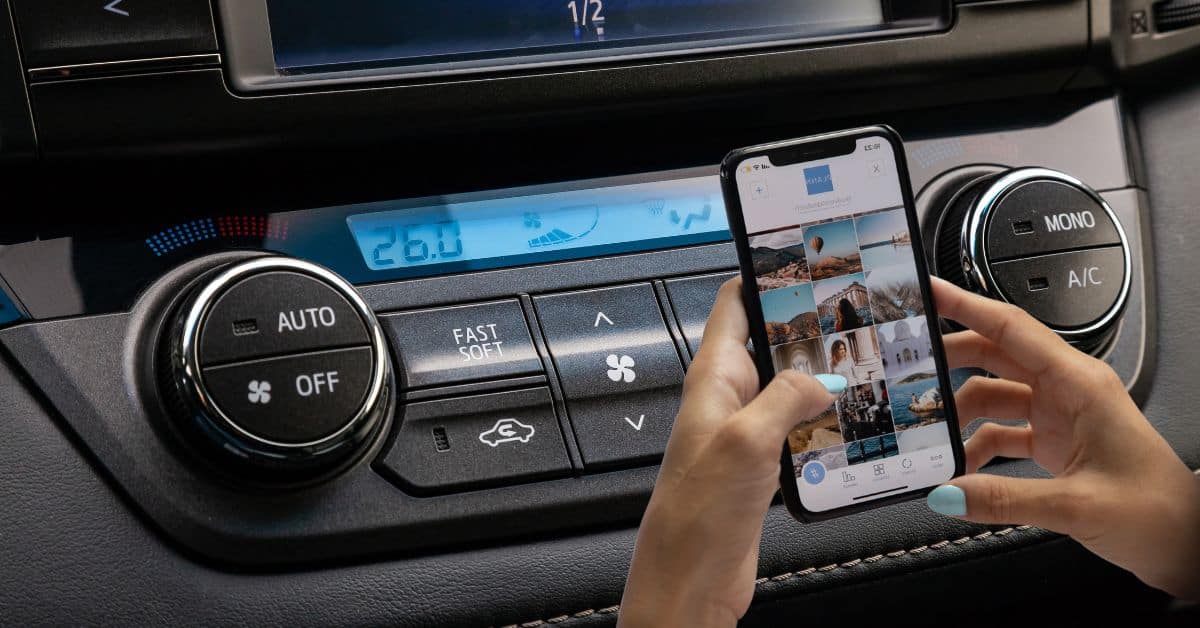
In today’s fast-paced world, staying connected while on the road is essential. Upgrading your car’s radio to one that integrates seamlessly with your smartphone can significantly enhance your driving experience. With features like Bluetooth hands-free calling and music streaming, you can keep your focus on the road while enjoying all the benefits of your smartphone. In this guide, we’ll explore why upgrading your car’s radio for better smartphone integration is a smart move and how it can make every drive safer and more enjoyable.
Why Upgrade Your Radio for Smartphone Integration?
Upgrading your car’s radio isn’t just about improving sound quality—it’s about bringing your vehicle up to speed with modern technology. Here’s why you should consider a radio upgrade that includes smartphone integration:
1. Hands-Free Calling for Safer Driving One of the primary benefits of integrating your smartphone with your car’s radio is the ability to make and receive calls hands-free.
- Bluetooth Connectivity: A modern radio with Bluetooth connectivity allows you to sync your smartphone to your car’s audio system, enabling hands-free calling. This feature is crucial for staying connected on the go while keeping your hands on the wheel and your eyes on the road.
- Voice Control: Many upgraded radios also support voice control through your smartphone’s assistant, like Siri or Google Assistant. This allows you to make calls, send messages, or even check your calendar using just your voice, reducing distractions and enhancing safety.
2. Wireless Music Streaming In addition to hands-free calling, smartphone integration enables you to stream music wirelessly from your phone to your car’s audio system.
- Access to Your Music Library: Whether you use Spotify, Apple Music, or another streaming service, Bluetooth-enabled radios allow you to play your favorite playlists directly through your car’s speakers. You can easily control playback, switch tracks, and adjust volume, all from your radio or steering wheel controls.
- Better Sound Quality: Upgrading to a modern radio often means better sound quality, with support for high-fidelity audio codecs that ensure your music sounds crisp and clear, whether you’re streaming wirelessly or playing files stored on your phone.
3. A Seamless, Connected Driving Experience Integrating your smartphone with your car’s radio creates a more connected and convenient driving experience.
- Automatic Pairing: Once your smartphone is paired with your new radio, it will automatically connect every time you start your car. This means you don’t have to worry about manually connecting your phone every time you drive.
- Integrated Controls: Many upgraded radios offer integration with your car’s existing controls, such as steering wheel buttons, making it easier to manage calls, music, and navigation without taking your hands off the wheel.
For a wide selection of radios that offer advanced smartphone integration, explore the options at Autoradio Adapter.
How to Upgrade Your Radio for Smartphone Integration
Upgrading your car’s radio to one that supports smartphone integration is easier than you might think, especially with the right tools and accessories.
1. Choosing the Right Radio When selecting a new radio, look for one that offers comprehensive smartphone integration features:
- Bluetooth Connectivity: Ensure that the radio has Bluetooth capability for hands-free calling and music streaming.
- Voice Control Support: If you frequently use your phone’s voice assistant, choose a radio that supports voice control for easy access to your phone’s features while driving.
- Compatibility: Make sure the radio is compatible with your smartphone, whether you use iPhone or Android. Some radios offer additional features like wireless CarPlay or Android Auto, which further enhance integration.
2. Installation Considerations Once you’ve chosen the right radio, it’s important to ensure that it fits seamlessly into your car’s dashboard.
- Fascia Plates and Dash Kits: Depending on your vehicle, you may need a fascia plate or dash kit to ensure that your new radio fits perfectly into your dashboard. These kits are designed to match your car’s interior, providing a factory-like appearance after installation.
- Wiring Harnesses and Adapters: To simplify the installation process, use a wiring harness that’s compatible with your car’s make and model. This allows you to connect your new radio to your car’s existing wiring without needing to cut or splice wires.
For all the necessary installation accessories, including fascia plates, dash kits, and wiring harnesses, visit Autoradio Einbauset.
3. Professional Installation vs. DIY While some drivers prefer to install their new radio themselves, others may choose to have it professionally installed.
- DIY Installation: If you’re comfortable working with car electronics, installing the radio yourself can be a rewarding experience. Just make sure you have all the necessary tools and accessories before you begin.
- Professional Installation: If you’re unsure about the installation process, or if your car has a more complex setup, it may be worth investing in professional installation. This ensures that your radio is installed correctly and that all features function as intended.
Conclusion: Enhance Your Driving Experience with a Radio Upgrade
Upgrading your car’s radio to one that supports smartphone integration is a smart investment in both safety and convenience. With features like Bluetooth hands-free calling and music streaming, you can enjoy a more connected driving experience without distractions. Whether you choose to install the radio yourself or have it professionally done, the benefits of a modern, integrated head unit are undeniable.
For the best selection of head units, along with all the necessary installation accessories, visit autoradio-adapter.eu. With the right setup, you can transform your car into a connected, modern driving environment that enhances every journey.
Comments
You may use these HTML tags and attributes: <a href="" title=""> <abbr title=""> <acronym title=""> <b> <blockquote cite=""> <cite> <code> <del datetime=""> <em> <i> <q cite=""> <s> <strike> <strong>

Be the first to comment.